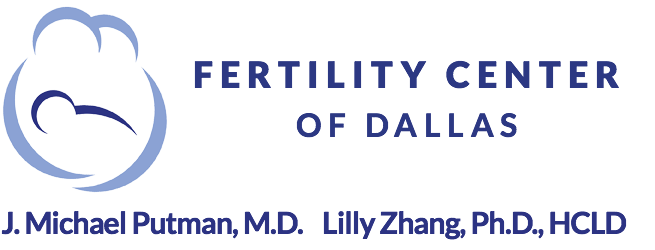
15 Oct Fibroids and Your Fertility
Fibroid tumors are not uncommon. According to womenshealth.gov, as many as 80% of all women will develop fibroids at some point during their life. These uterine tumors are almost always benign and may not require any treatment at all if they don’t present any symptoms. In fact, treatment is only recommended if tumors are causing discomfort, pain or other complications- of if you have fibroids that threaten fertility.
Unfortunately, for women who develop fibroid tumors during their childbearing years, the complications can cause infertility. According to ASRM, 5% to 10% of infertile women have fibroids.
What are fibroid tumors?
The medical term for a fibroid tumor is leiomyoma or myoma. These tumors are muscular in nature and they emerge – and are attached to – the uterine wall. You can have one or you can have many; tumors can be very small, or they can grow as large as a grapefruit. Fibroids may never cause any symptoms, or women may experience pain, discomfort, heavy periods and other side effects. Their cause – as well as what inspires them to grow or shrink – remains largely a mystery. You can read more detail about these tumors on the womenshealth.com website.
As you can imagine, small tumors are typically not a problem while larger tumors can be. When it comes to fertility, however, it all depends on type, size and location.
The good news is that fibroids that affect fertility can almost always be resolved by an experienced surgeon who specializes in hysteroscopic myomectomies. The goal is to remove the tumor and minimize any potential scarring, so the integrity of the uterus is maintained.
How to fibroids affect fertility?
There are three main types of myoma:
- Submucous fibroids. These tumors occur inside the muscle of the uterus but can bulge into the uterus itself, impacting the integrity of the endometrial cavity. If the tumor grows into the uterine cavity itself, it’s called an intracavitary Intramural fibroids (See #2) can also affect the endometrial cavity if they grow large enough. Submucosal fibroids are the most likely to cause fertility problems because they impact the ability of a fertilized egg to attach to the uterine wall. They can also affect the size and shape of the uterine cavity, which can prevent a fertilized egg/embryo from developing properly and increases the chances of miscarriage or preterm labor.
- Intramural fibroids. These occur in the middle portion of the uterine wall. They may never affect the interior uterine cavity. If they do cause the endometrial lining and indent the cavity wall, you’re more likely to have problems conceiving or carrying a baby full-term. Some studies show removing intramural fibroids increase your chances of having a full-term pregnancy. Others do not, so it’s worth discussing with your doctor.
- Subserous fibroids. These grow on the exterior side of the uterus and so far studies have shown no links between subserous fibroids and decreased fertility rates.
At this point in time, we suspect hormone levels and/or genetics are the most likely factors involved with fibroids, but there is not concrete data. Thus, surgery is the most effective method of treatment for women trying to get pregnant.
What should I know about fibroids and surgical treatment?
If you’re trying to get pregnant, there are two things to pay attention to regarding fibroids and tumors.
First, pregnancy rates are only increased by the removal of two types of fibroids: submucous fibroids, and intramural fibroids that visibly impact the endometrial lining. Surgery for other types of fibroids is only recommended if they cause pain, menstrual irregularity or other health issues.
Second, it’s imperative that you find a surgeon who has extensive experience in removing fibroids. Since the surgery involves the uterine walls, and uterine scarring can cause infertility, you want to minimize the risk of adhesions. A good surgeon will make a conscientious effort to minimize any adhesions that might develop as the result of the surgery.
Also, be aware that the number and depth of the tumors may affect your labor and delivery. When a surgeon removes multiple fibroids, and/or there a tumor (or tumors) that are very deep in the uterine walls, it’s sometimes recommended that you have a cesarean section. This is prescribed as a preventative measure because thinned uterine walls could put you at risk for placenta abruption – a very serious complication. An induced cesarean ensures the baby is delivered safely, without increased risk to your uterine walls. Again, this would only be the case if the surgeon had to remove multiple tumors, or you had a tumor embedded particularly deep in the uterine wall.
Have you been diagnosed with fibroids, or suspect fibroids may pose a threat to your ability to conceive or carry a full-term baby? Schedule a consultation with us here at Fertility Center of Dallas.






